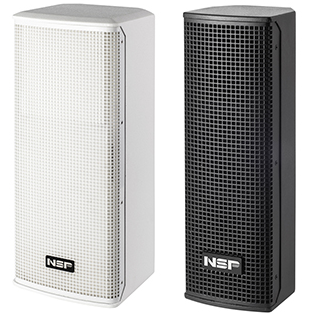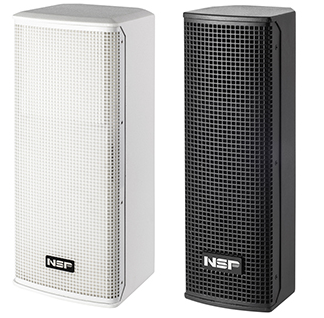How to Choose the Best Monitor Speakers for Studio Use?
Selecting the best monitor speakers for studio use is essential for achieving accurate sound reproduction, whether you’re mixing, mastering, or recording music. Unlike regular speakers, monitor speakers are designed to deliver a flat frequency response, ensuring that your audio is represented as accurately as possible. However, choosing the right pair can be overwhelming with so many options available. In this guide, we’ll walk you through everything you need to know about monitor speakers, from key specifications to room setup and placement.

Understanding Monitor Speakers and Their Importance
What Are Monitor Speakers?
Monitor speakers, also known as studio monitors, are speakers designed for professional audio production. Unlike consumer speakers that enhance bass or treble, monitor speakers provide a neutral sound profile to ensure an accurate representation of the audio being produced.
Why Do You Need Monitor Speakers for Studio Use?
Accurate Sound Reproduction
- Helps you hear the true details of your mix without artificial enhancements.
- Ensures that your final mix translates well to different playback systems.
Balanced Frequency Response
- Provides a flat response curve for precision mixing.
- Prevents misleading bass boosts or treble enhancements that can distort your sound.
Essential for Mixing and Mastering
- Allows producers to fine-tune every element of their track.
- Helps in identifying issues like excessive bass, muddy mids, or harsh highs.
Key Factors to Consider When Choosing Monitor Speakers
Active vs. Passive Monitor Speakers
One of the first decisions you need to make is whether to choose active or passive monitor speakers.
Active Monitor Speakers
- Built-in amplifier for easy setup.
- Designed for optimized performance without needing an external amp.
- Ideal for home studios and professionals.
Passive Monitor Speakers
- Requires an external amplifier.
- Offers flexibility in amplifier selection and upgrades.
- Used in high-end studio setups with separate power components.
Near-Field vs. Mid-Field Monitor Speakers
The size of your studio will influence whether you need near-field or mid-field monitor speakers.
Near-Field Monitor Speakers
- Designed for small to medium-sized rooms.
- Placed close to the listener to minimize room reflections.
- Ideal for home studios and small mixing environments.
Mid-Field Monitor Speakers
- Designed for larger studios with more space.
- Require more distance for optimal sound imaging.
- Ideal for professional studios handling complex mixes.
Choosing the Right Monitor Speaker Size
How Woofer Size Affects Sound
The size of the woofer in your monitor speakers determines how well they reproduce low frequencies.
- 5-inch woofers: Best for small home studios; good for general mixing but limited low-end response.
- 7-inch woofers: Balanced choice for small to medium-sized rooms, providing better bass response.
- 8-inch or larger woofers: Ideal for professional studios, offering deep bass and a full-range frequency response.
Frequency Response and Accuracy
A wider frequency response ensures that your monitor speakers can reproduce the full spectrum of sound accurately.
- Typical range: 50 Hz – 20 kHz is suitable for most mixing needs.
- Extended bass response: If working with bass-heavy music, consider monitors with a lower-end frequency around 30 Hz.
- Tweeter clarity: A high-frequency range extending to 20 kHz or higher ensures crisp details in the highs.
Essential Features to Look for in Monitor Speakers
Flat Frequency Response
- Ensures that no frequencies are artificially boosted or cut.
- Helps achieve mixes that translate well across different audio systems.
Room Correction and EQ Controls
- Some monitor speakers offer built-in EQ adjustments to compensate for room acoustics.
- Essential for untreated rooms where sound reflections might color the mix.
Connectivity Options
- XLR and TRS Inputs: Balanced connections for professional setups, reducing noise interference.
- RCA Inputs: Suitable for home studios with consumer audio interfaces.
- Bluetooth and USB: Found in some modern monitor speakers, though not common in professional-grade models.
Proper Placement and Setup of Monitor Speakers
Monitor Speaker Positioning for Optimal Sound
Proper placement of your monitor speakers is just as important as choosing the right model.
Speaker Height
- Position tweeters at ear level for accurate high-frequency response.
- Use monitor stands if necessary to achieve the correct height.
Speaker Angle
- Place monitors at a 30-degree angle toward the listening position.
- Forms an equilateral triangle between the two monitors and the listener.
Distance from Walls
- Keep at least 6-12 inches of space between the monitors and the wall.
- Helps prevent unwanted bass buildup caused by wall reflections.
Using Acoustic Treatment to Improve Accuracy
Even the best monitor speakers will underperform in an untreated room.
- Use bass traps to control low-frequency buildup.
- Install acoustic panels to reduce reflections and improve clarity.
- Place a carpet or rug to minimize sound bouncing off hard surfaces.
Best Monitor Speaker Brands and Models to Consider
Popular Monitor Speaker Brands
- Yamaha (e.g., HS5, HS7, HS8) – Known for their flat response and reliability.
- KRK (e.g., Rokit series) – Great for electronic music with enhanced bass.
- Adam Audio (e.g., T7V, A7X) – High-end clarity with excellent transient response.
- Genelec – Premium option used in professional studios worldwide.
- JBL (e.g., 305P, 308P) – Affordable with solid performance.
Best Monitor Speakers for Different Budgets
Budget-Friendly Options ($150-$300 per pair)
- JBL 305P MkII
- Mackie CR5-XBT
- PreSonus Eris E5
Mid-Range Studio Monitors ($300-$700 per pair)
- Yamaha HS7
- KRK Rokit 8 G4
- Adam Audio T7V
High-End Professional Monitors ($800+ per pair)
- Genelec 8040B
- Focal Alpha 65
- Neumann KH 120
Common Mistakes to Avoid When Choosing Monitor Speakers
Choosing Speakers Based on Size Alone
-
- Bigger doesn’t always mean better; select speakers suited for your room size.
Ignoring Room Acoustics
-
- Even high-end monitor speakers will sound bad in an untreated room.
Not Testing Different Models
-
- Listen to multiple brands to find the best sound profile for your needs.
Overlooking Connectivity
-
- Ensure compatibility with your audio interface and equipment.
Finding the Best Monitor Speakers for Your Studio
Choosing the right monitor speakers is a crucial step in creating professional-quality music. By considering factors like frequency response, speaker size, and placement, you can ensure accurate sound reproduction for your mixing and mastering needs. Investing in high-quality monitor speakers will not only improve your studio workflow but also help you produce tracks that sound great on any audio system.
Now that you know how to choose the best monitor speakers, you’re ready to upgrade your studio setup and take your productions to the next level!
